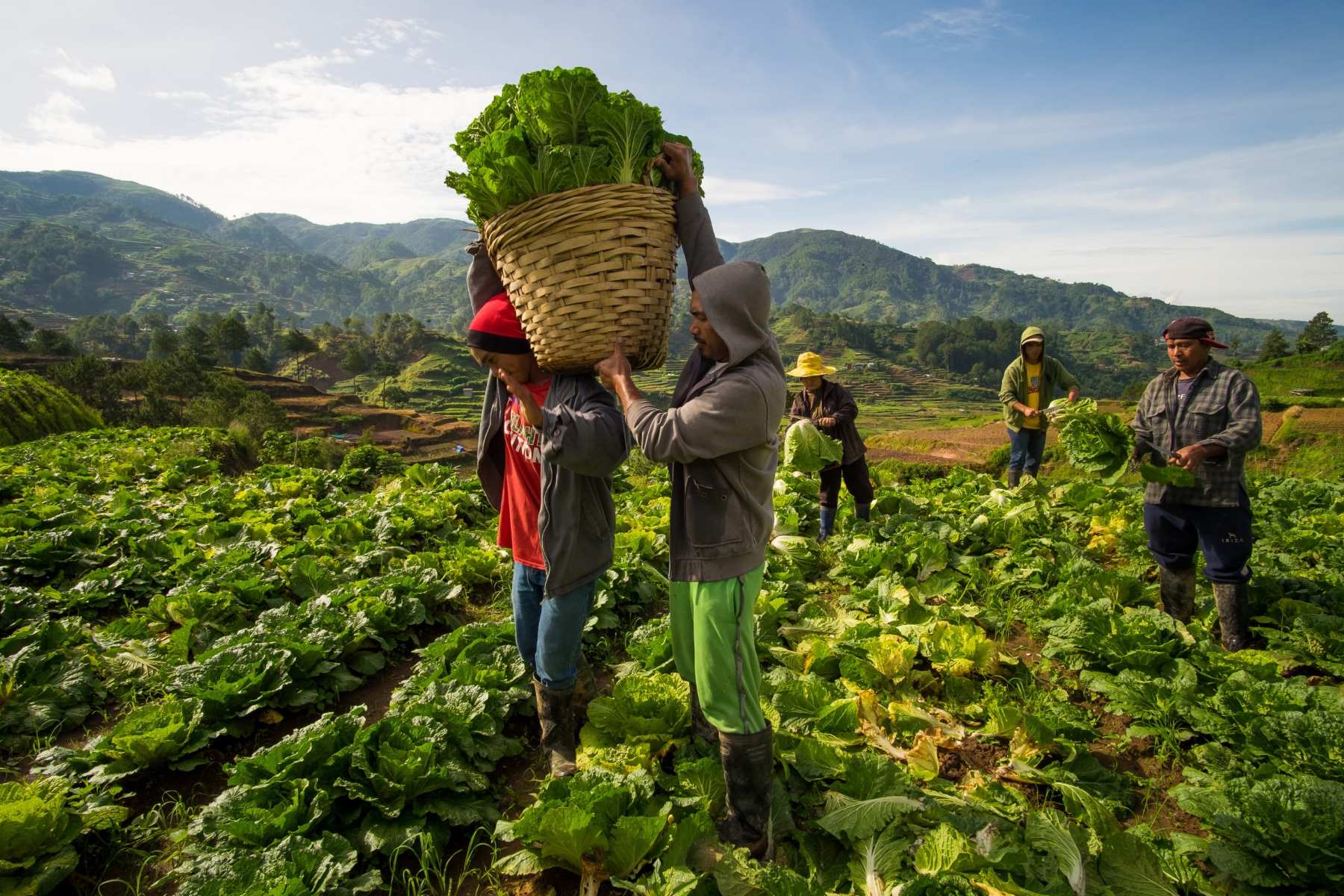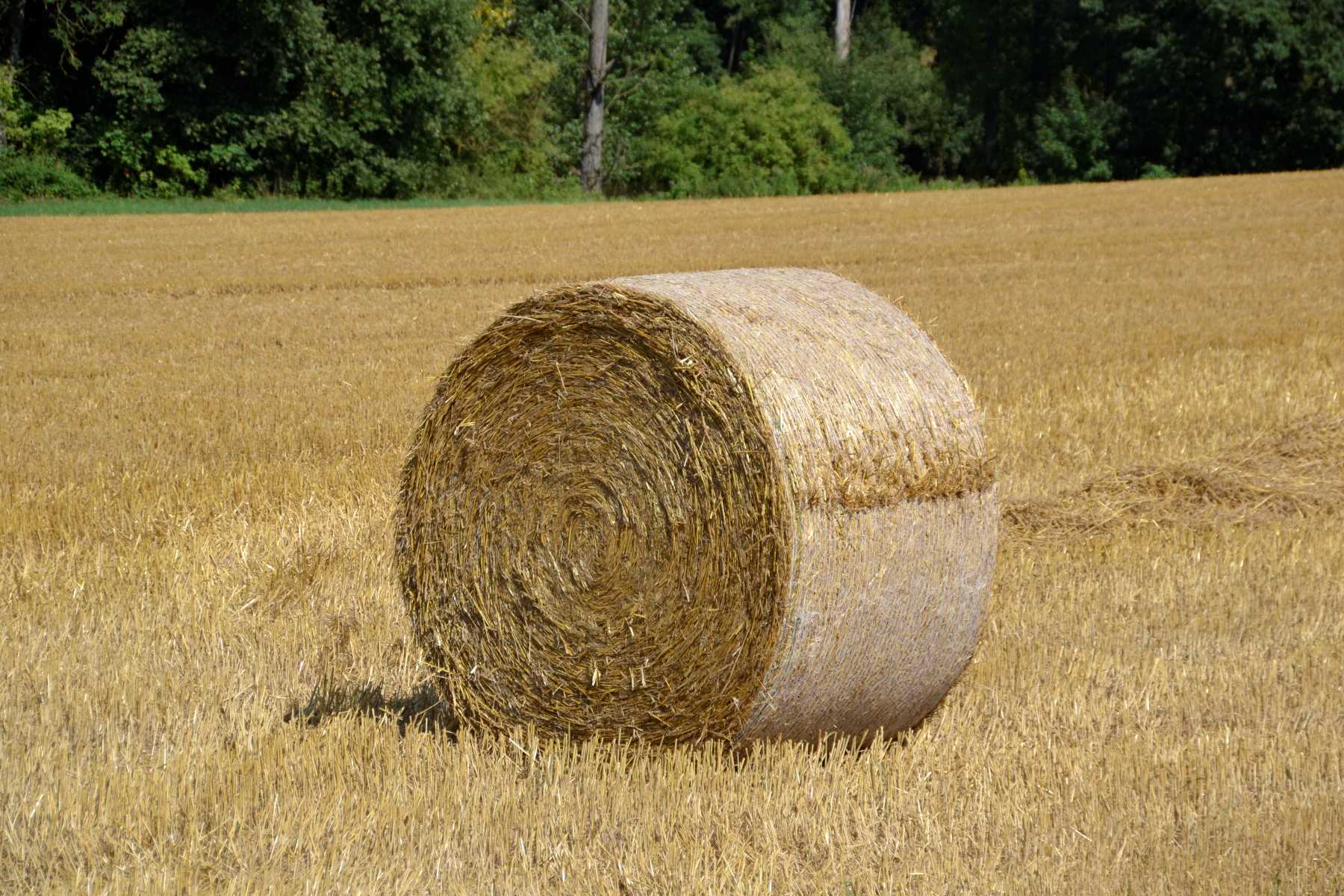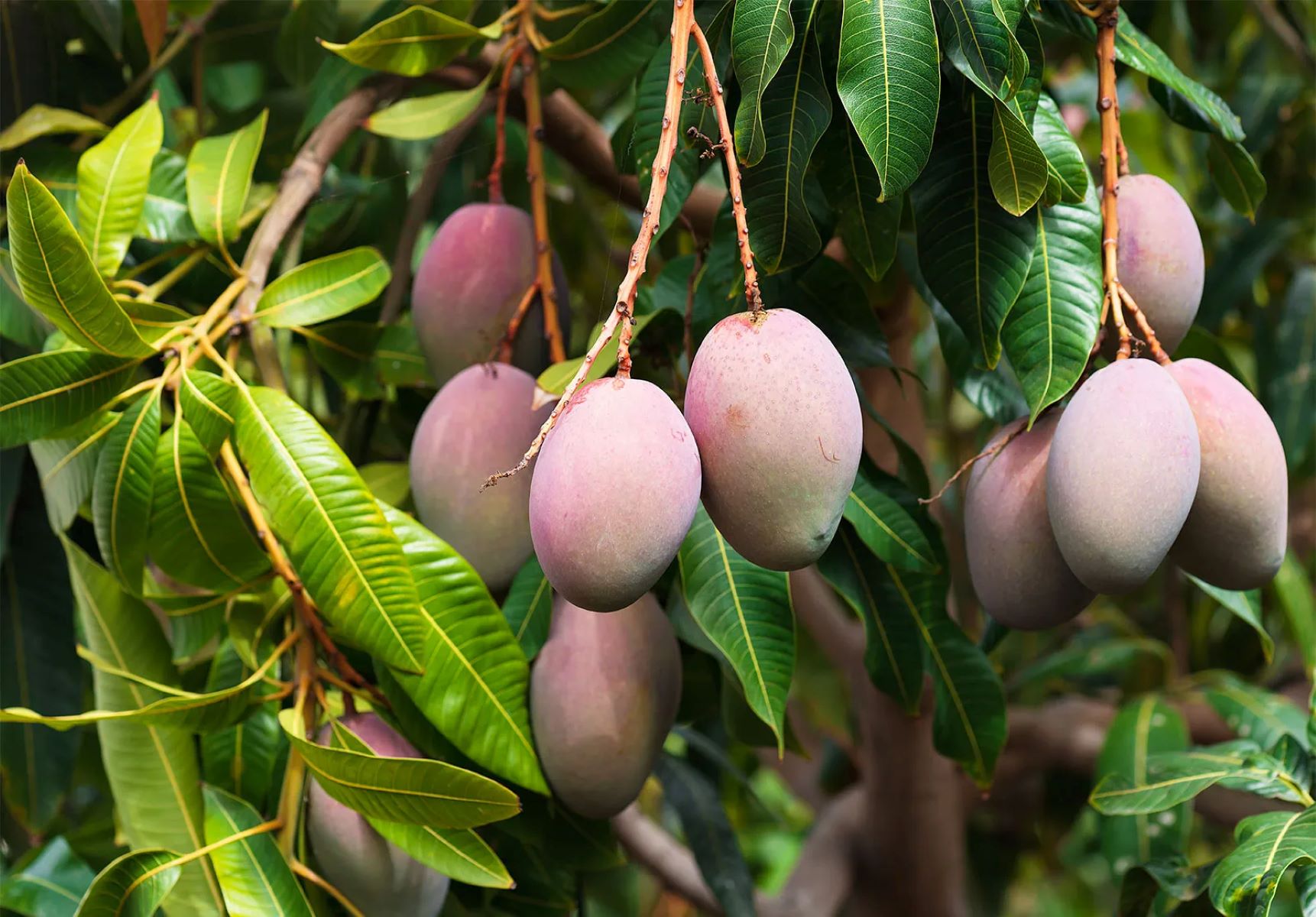Home>History>Discover The Origins Of Agriculture: Unveiling The Agricultural Hearths


History
Discover The Origins Of Agriculture: Unveiling The Agricultural Hearths
Published: January 11, 2024
Uncover the historical roots of agriculture and the evolution of farming practices with our in-depth exploration of agricultural hearths. Delve into the rich history of human cultivation and food production. Discover the origins of agriculture with us!
(Many of the links in this article redirect to a specific reviewed product. Your purchase of these products through affiliate links helps to generate commission for Regretless.com, at no extra cost. Learn more)
Table of Contents
- Introduction
- The Fertile Crescent: The Birthplace of Agriculture
- The Nile River Valley: Agricultural Innovation in Ancient Egypt
- The Indus Valley: Early Agricultural Practices in South Asia
- The Yellow River Valley: Agricultural Development in Ancient China
- Mesoamerica: The Origins of Maize Cultivation
- South America: The Domestication of Potatoes and Quinoa
- Conclusion
Introduction
The origins of agriculture mark a pivotal point in human history, signifying the transition from nomadic hunter-gatherer societies to settled agricultural communities. This monumental shift not only altered the way people lived and interacted with their environment but also laid the foundation for the development of civilizations. By delving into the agricultural hearths, the geographic regions where early farming practices emerged independently, we gain a profound understanding of how humanity's relationship with the land evolved.
Exploring the agricultural hearths allows us to uncover the ingenuity and resourcefulness of our ancestors as they harnessed the natural world to sustain and advance their societies. From the Fertile Crescent in the Middle East to the Nile River Valley in Egypt, the Indus Valley in South Asia, the Yellow River Valley in China, and the regions of Mesoamerica and South America, each area holds a unique story of agricultural innovation and cultivation.
By examining these agricultural hearths, we can trace the origins of staple crops such as wheat, barley, rice, maize, potatoes, and quinoa, which have significantly shaped human diets and cultures across the globe. Furthermore, understanding the diverse agricultural practices that emerged in these regions provides valuable insights into the development of agricultural techniques, irrigation systems, and the domestication of plants and animals.
As we embark on this journey to unravel the agricultural hearths, we will witness the remarkable ingenuity of ancient societies that laid the groundwork for the agricultural methods and systems that continue to sustain the world's population today. Join us as we uncover the fascinating narratives of human ingenuity, adaptation, and resilience that have shaped the course of history through the emergence of agriculture.
The Fertile Crescent: The Birthplace of Agriculture
The Fertile Crescent, often referred to as the "Cradle of Civilization," holds a prominent place in the annals of agricultural history. Encompassing the region of modern-day Iraq, Syria, Lebanon, Israel, and Jordan, this fertile arc of land nestled between the Tigris and Euphrates rivers witnessed the dawn of agriculture around 10,000 BCE. The favorable environmental conditions, including fertile soil, ample water supply, and a diverse range of wild plant species, provided the ideal setting for the birth of farming practices.
One of the most significant developments in the Fertile Crescent was the domestication of wheat and barley, which laid the groundwork for the establishment of sedentary agricultural communities. The early inhabitants of this region, known as the Natufians, gradually transitioned from a nomadic lifestyle to settled farming as they recognized the potential of cultivating the wild grasses that grew abundantly in the area. This shift marked a pivotal moment in human history, as it enabled communities to produce their food, leading to population growth and the emergence of complex societies.
The innovative practices of the ancient inhabitants of the Fertile Crescent extended beyond cereal cultivation. They also engaged in the domestication of livestock, including goats, sheep, and cattle, further enhancing their agricultural pursuits. The development of irrigation systems, such as canals and ditches, played a crucial role in maximizing agricultural productivity, allowing for the cultivation of crops in arid regions and fostering the growth of surplus food supplies.
Moreover, the Fertile Crescent served as a hub for the exchange of agricultural knowledge and technologies, fostering cultural interactions and the diffusion of farming practices to neighboring regions. The development of writing systems, such as cuneiform script, in ancient Mesopotamia further facilitated the documentation and dissemination of agricultural techniques, contributing to the advancement of agricultural knowledge.
The legacy of the Fertile Crescent's agricultural innovations reverberates through the ages, shaping the foundations of human civilization and influencing agricultural practices worldwide. By unraveling the story of the birthplace of agriculture, we gain a profound appreciation for the ingenuity and resilience of ancient societies that laid the groundwork for the agricultural revolution, forever altering the trajectory of human development.
The Fertile Crescent stands as a testament to the transformative power of agricultural innovation, serving as a source of inspiration and insight into the profound impact of early farming practices on the course of human history.
The Nile River Valley: Agricultural Innovation in Ancient Egypt
The Nile River Valley, with its fertile banks and predictable annual flooding, played a pivotal role in the development of ancient Egyptian civilization and agricultural practices. The Nile's annual inundation, known as the "inundation of the Nile," brought nutrient-rich silt to the riverbanks, creating exceptionally fertile soil that was conducive to agricultural productivity. This natural phenomenon provided the foundation for the agricultural innovation that sustained one of the most advanced civilizations of the ancient world.
The ancient Egyptians harnessed the power of the Nile's flooding to cultivate a diverse array of crops, most notably wheat and barley. The cultivation of these staple grains formed the cornerstone of the Egyptian diet and economy, enabling the growth of a prosperous and sophisticated society. In addition to grains, the ancient Egyptians cultivated a variety of crops, including flax, vegetables, and fruits, harnessing the fertile land along the Nile to sustain their population and support trade networks.
Central to the success of Egyptian agriculture was the development of advanced irrigation techniques. The construction of canals, dikes, and reservoirs allowed the efficient distribution of water for crop irrigation, maximizing agricultural productivity and enabling the cultivation of crops in both upper and lower regions of the Nile. The mastery of irrigation systems not only sustained the agricultural output but also facilitated the cultivation of surplus crops, contributing to the economic prosperity and stability of ancient Egypt.
The ancient Egyptians' reverence for the Nile extended beyond its role in agriculture; it held profound spiritual and cultural significance. The annual flooding was viewed as a divine gift from the gods, and rituals and celebrations were dedicated to honoring the Nile's life-giving waters. This deep spiritual connection to the river underscored the integral role of agriculture in ancient Egyptian society, shaping their beliefs, traditions, and societal structures.
Furthermore, the ancient Egyptians demonstrated remarkable ingenuity in developing agricultural tools and techniques, including the use of plows, sickles, and storage facilities. The utilization of these tools, coupled with the understanding of seasonal cycles and agricultural calendars, allowed for efficient farming practices and the management of agricultural resources.
The agricultural innovations of ancient Egypt not only sustained a flourishing civilization but also left a lasting legacy in the annals of agricultural history. The practices developed along the Nile River Valley exemplify the profound impact of environmental adaptation, technological innovation, and cultural significance in shaping the course of agricultural development. The legacy of ancient Egyptian agriculture continues to inspire and inform modern agricultural practices, underscoring the enduring relevance of the innovations that emerged along the banks of the Nile.
The agricultural advancements in ancient Egypt stand as a testament to the resourcefulness and resilience of early civilizations, offering invaluable insights into the intricate relationship between human societies and the natural world. As we unravel the agricultural innovations of ancient Egypt, we gain a deeper appreciation for the enduring legacy of agricultural practices that have shaped human history and continue to influence agricultural systems today.
The Indus Valley: Early Agricultural Practices in South Asia
The Indus Valley, encompassing the present-day regions of Pakistan and northwest India, served as the cradle of one of the world's earliest urban civilizations, the Indus Valley Civilization (c. 3300–1300 BCE). Amidst the sophisticated urban centers and intricate trade networks, the Indus Valley inhabitants developed early agricultural practices that laid the groundwork for sustainable food production and societal advancement.
The fertile alluvial plains of the Indus River and its tributaries provided an ideal environment for agricultural pursuits. The ancient inhabitants of the Indus Valley cultivated a diverse range of crops, including wheat, barley, millet, and rice, harnessing the fertile soil and the seasonal monsoon rains to support their agricultural endeavors. The cultivation of these staple grains formed the backbone of the Indus Valley's agrarian economy, sustaining the burgeoning urban centers and facilitating trade with distant regions.
The agricultural practices of the Indus Valley Civilization were marked by remarkable ingenuity and technological sophistication. The construction of advanced irrigation systems, including canals and reservoirs, enabled efficient water management and the irrigation of agricultural fields, contributing to high crop yields and agricultural surplus. Additionally, the development of granaries and storage facilities attested to the civilization's ability to manage and preserve harvested crops, ensuring food security and stability.
Moreover, the Indus Valley inhabitants demonstrated a deep understanding of agricultural cycles and environmental adaptation. The utilization of agricultural calendars and the adoption of crop rotation techniques reflected their astute knowledge of seasonal variations and soil fertility, enhancing the sustainability of their agricultural practices. Furthermore, the domestication of livestock, including cattle, sheep, and goats, complemented their agrarian pursuits, providing essential resources such as dairy products, meat, and traction for agricultural activities.
The agricultural innovations of the Indus Valley Civilization not only sustained the flourishing urban centers but also fostered cultural and technological exchange within the region. The surplus agricultural produce facilitated trade with neighboring civilizations, promoting the exchange of goods, ideas, and agricultural techniques, contributing to the cultural and economic vibrancy of the ancient Indus Valley.
The enduring legacy of the early agricultural practices in the Indus Valley resonates through the annals of agricultural history, underscoring the pivotal role of the region in shaping the development of agricultural systems in South Asia and beyond. The agricultural innovations of the Indus Valley Civilization exemplify the profound impact of sustainable farming practices, technological prowess, and environmental adaptation in fostering the growth and resilience of ancient societies.
As we unravel the agricultural practices of the Indus Valley, we gain valuable insights into the resourcefulness and ingenuity of early agricultural communities, illuminating the intricate relationship between human societies and the natural world. The enduring legacy of the early agricultural practices in the Indus Valley serves as a testament to the resilience and innovation of ancient civilizations, offering timeless lessons that continue to inform and inspire agricultural practices in the modern era.
The Yellow River Valley: Agricultural Development in Ancient China
The Yellow River Valley, often referred to as the "Cradle of Chinese Civilization," holds a paramount place in the history of agricultural development. Situated in present-day China, the Yellow River, also known as the Huang He, played a central role in shaping the agricultural practices and societal advancements of ancient China. The region's fertile plains and the river's propensity for flooding provided the essential elements for the emergence of sophisticated agricultural systems that sustained one of the world's earliest and most enduring civilizations.
Ancient Chinese agricultural practices were deeply intertwined with the rhythms of the Yellow River. The annual flooding of the river deposited nutrient-rich silt onto the surrounding floodplains, creating fertile agricultural land that supported the cultivation of staple crops such as millet, wheat, and barley. The mastery of floodwater management and irrigation techniques allowed the ancient Chinese farmers to harness the benefits of the river's inundation while mitigating the potential risks of flooding, ensuring a consistent and bountiful agricultural yield.
The development of agricultural technologies and innovations in ancient China was instrumental in maximizing agricultural productivity. The introduction of iron tools, such as plows and hoes, revolutionized farming practices, enabling more efficient land cultivation and the expansion of arable land. Furthermore, the utilization of draught animals, particularly oxen, for plowing and transportation enhanced the agricultural output, contributing to the sustenance of growing populations and the flourishing of early Chinese civilizations.
The significance of agriculture in ancient China extended beyond mere sustenance; it permeated every facet of society, culture, and governance. The agricultural calendar, which delineated the farming activities according to seasonal changes, exemplified the deep-rooted connection between agricultural practices and the celestial observations that underpinned Chinese cosmology. Moreover, the reverence for the land and the agrarian way of life shaped the philosophical and ethical foundations of Chinese civilization, as evidenced in the teachings of Confucianism and Daoism, which emphasized harmony with nature and the virtues of agricultural labor.
The enduring legacy of agricultural development in the Yellow River Valley is evident in the profound impact it has had on the trajectory of Chinese civilization and the world at large. The agricultural innovations and practices that emerged in ancient China laid the groundwork for sustainable food production, technological advancements, and cultural resilience, shaping the course of human history and influencing agricultural systems across diverse landscapes and epochs.
As we unravel the agricultural development in the Yellow River Valley, we gain invaluable insights into the ingenuity, adaptability, and enduring legacy of ancient Chinese agricultural practices, which continue to inform and inspire agricultural systems and cultural traditions in the modern era. The fertile plains of the Yellow River Valley stand as a testament to the transformative power of agricultural innovation and the enduring legacy of human ingenuity in shaping the course of history.
Read more: The Meaning And Origin Of ‘Rainbow Babies’
Mesoamerica: The Origins of Maize Cultivation
Mesoamerica, a region encompassing present-day Mexico and parts of Central America, holds a profound significance in the history of agriculture, particularly in the cultivation of maize, or corn. The origins of maize cultivation in Mesoamerica represent a transformative chapter in the development of agricultural practices, as it not only sustained ancient civilizations but also fostered cultural, culinary, and economic legacies that endure to this day.
The domestication of maize stands as a testament to the ingenuity and resourcefulness of Mesoamerican societies. Dating back to around 9000 years ago, the indigenous peoples of Mesoamerica selectively bred and cultivated teosinte, a wild grass, transforming it into the staple crop that would become integral to their way of life. The cultivation and adaptation of maize to diverse ecological niches within Mesoamerica contributed to the agricultural diversity and resilience of the region's societies.
Maize held multifaceted significance in Mesoamerican cultures, extending beyond its role as a dietary staple. It served as a symbol of sustenance, cultural identity, and spiritual significance, featuring prominently in religious ceremonies, art, and folklore. The cultivation and consumption of maize fostered a deep reverence for the land and the cycles of nature, shaping the cultural and ritual practices of Mesoamerican societies.
The agricultural innovations associated with maize cultivation in Mesoamerica extended beyond the mere act of farming. The development of sophisticated agricultural techniques, including terracing, crop rotation, and the utilization of chinampas, or floating gardens, exemplified the intricate knowledge and environmental adaptation of Mesoamerican farmers. These practices not only sustained the burgeoning populations but also facilitated the growth of complex urban centers, such as Teotihuacan and Tenochtitlan, which relied on maize as a primary food source.
Furthermore, the culinary legacy of maize cultivation in Mesoamerica reverberates across the globe. The diverse culinary applications of maize, including tortillas, tamales, and pozole, showcase the culinary ingenuity of Mesoamerican societies, influencing gastronomic traditions that continue to thrive in modern-day cuisines.
The enduring legacy of maize cultivation in Mesoamerica underscores the profound impact of agricultural innovation on the development of human societies. The cultivation of maize not only sustained ancient Mesoamerican civilizations but also fostered cultural, culinary, and economic legacies that endure to this day. As we unravel the origins of maize cultivation in Mesoamerica, we gain invaluable insights into the resilience, adaptability, and enduring legacy of agricultural practices that continue to shape human history and inspire agricultural systems in the modern era.
South America: The Domestication of Potatoes and Quinoa
South America stands as a cradle of agricultural innovation, notably marked by the domestication of two staple crops that have significantly shaped global cuisines and agricultural practices: potatoes and quinoa. The Andean region, encompassing present-day Peru, Bolivia, and Ecuador, served as the epicenter of the domestication and cultivation of these vital food sources, showcasing the resourcefulness and ingenuity of ancient South American societies.
The domestication of potatoes in the Andean highlands dates back over 10,000 years, with indigenous Andean communities selectively breeding and cultivating wild tubers to develop a diverse array of potato varieties. The cultivation of potatoes played a pivotal role in sustaining the populations of ancient Andean civilizations, providing a reliable source of nutrition that thrived in the challenging high-altitude environments. The adaptability of potatoes to diverse ecological niches within the Andean region underscored the agricultural diversity and resilience of the indigenous agricultural practices, contributing to the sustenance and cultural vibrancy of Andean societies.
Quinoa, often hailed as a superfood for its exceptional nutritional value, was another remarkable agricultural innovation that emerged in the Andean region. Indigenous Andean communities domesticated and cultivated quinoa as a staple crop, harnessing its adaptability to the high-altitude terrains and challenging climatic conditions. The cultivation and consumption of quinoa not only sustained the nutritional needs of ancient Andean populations but also held profound cultural and ritual significance, featuring prominently in religious ceremonies and traditional Andean cuisine.
The agricultural innovations associated with the domestication of potatoes and quinoa in South America exemplify the profound impact of indigenous agricultural knowledge and environmental adaptation. The development of terracing, crop rotation, and the utilization of agroecological practices demonstrated the intricate understanding of Andean farmers in maximizing agricultural productivity while preserving the ecological balance. Additionally, the cultural and spiritual significance of potatoes and quinoa underscored the deep reverence for the land and the agricultural traditions that permeated Andean societies.
The enduring legacy of the domestication of potatoes and quinoa in South America resonates through the annals of agricultural history, underscoring the pivotal role of the region in shaping the development of agricultural systems and culinary traditions. The agricultural innovations that emerged in the Andean highlands continue to inspire and inform modern agricultural practices, highlighting the enduring resilience and adaptability of ancient South American agricultural communities.
Conclusion
The exploration of the agricultural hearths, spanning from the Fertile Crescent to the Andean highlands of South America, unveils a rich tapestry of human ingenuity, adaptability, and resilience that has shaped the course of history. The origins of agriculture mark a transformative juncture in human development, signifying the transition from nomadic lifestyles to settled agricultural communities and the emergence of complex societies. By delving into the agricultural innovations of these diverse regions, we gain profound insights into the intricate relationship between human societies and the natural world, as well as the enduring legacy of agricultural practices that continue to influence modern agricultural systems and cultural traditions.
The Fertile Crescent, often heralded as the birthplace of agriculture, witnessed the domestication of wheat, barley, and livestock, laying the groundwork for sedentary farming and the development of irrigation systems. The Nile River Valley, with its annual inundation, fostered the cultivation of diverse crops and advanced irrigation techniques, sustaining the flourishing civilization of ancient Egypt. The Indus Valley, characterized by its fertile plains, showcased early agricultural practices, including the cultivation of staple grains and the development of sophisticated irrigation systems. The Yellow River Valley in ancient China exemplified the mastery of floodwater management and the utilization of agricultural technologies, shaping the foundations of Chinese civilization and agricultural practices. Mesoamerica, with its origins of maize cultivation, and the Andean region of South America, with the domestication of potatoes and quinoa, underscore the resourcefulness and resilience of indigenous agricultural communities, fostering cultural, culinary, and economic legacies that endure to this day.
As we reflect on the agricultural hearths, we recognize the enduring legacy of ancient agricultural practices that continue to inform and inspire modern agricultural systems. The agricultural innovations of these diverse regions not only sustained ancient civilizations but also fostered cultural, culinary, and economic legacies that resonate through the annals of history. The resourcefulness, adaptability, and ingenuity of early agricultural communities serve as a testament to the profound impact of sustainable farming practices, technological prowess, and environmental adaptation in shaping the course of human history.
In unraveling the agricultural hearths, we gain a deeper appreciation for the enduring legacy of agricultural practices that have shaped human history and continue to influence agricultural systems today. The agricultural innovations of these diverse regions stand as a testament to the transformative power of human ingenuity, resilience, and adaptability, offering timeless lessons that continue to inform and inspire agricultural practices in the modern era.














